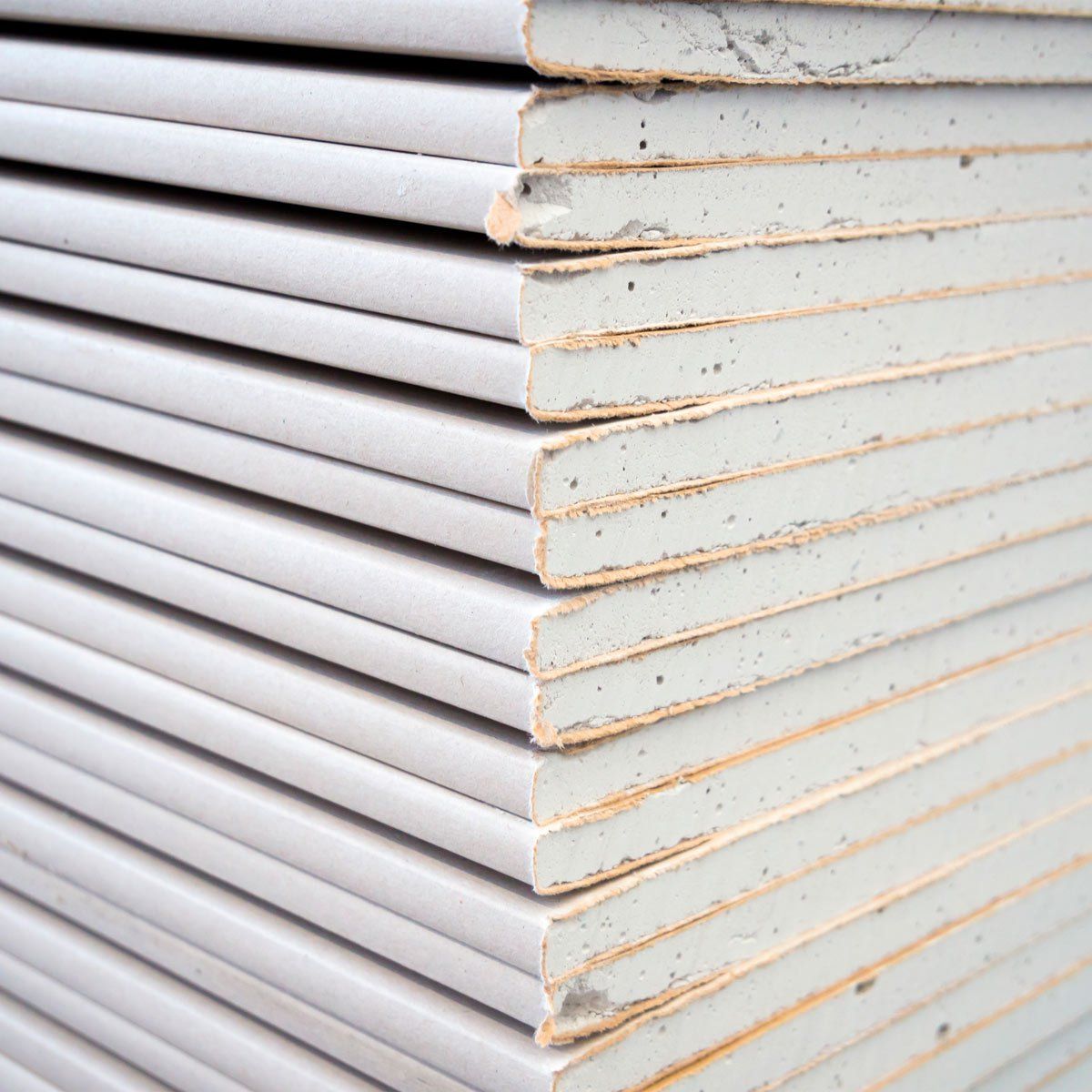Planning a home improvement project? Understanding 1/2-inch gypsum wallboard, commonly called drywall, is essential. This comprehensive guide covers everything from types and sizes to installation tips and cost considerations, empowering you to choose the right drywall for your needs.
Understanding 1/2″ Drywall: A Versatile Building Material
1/2-inch drywall is the foundation of most interior walls and ceilings. Its gypsum core, sandwiched between two strong paper sheets, offers a lightweight yet surprisingly strong and adaptable material. Whether you’re a seasoned contractor or a DIY enthusiast, drywall’s ease of use and smooth finish make it a popular choice. Want to learn more about how much concrete you’ll need for your project? Check out our guide on how many yards you can get from a 1 80 lb bag of concrete.
Types of 1/2″ Drywall
While all drywall may appear similar, several types cater to specific needs:
- Standard Drywall: The workhorse for everyday wall and ceiling applications. Cost-effective and readily available, it’s the go-to for general construction and repairs.
- Lightweight Drywall: Reduces strain during installation, particularly for ceilings. Its lighter core makes it easier to lift and maneuver.
- Moisture-Resistant Drywall (MR Board): Designed for damp areas like bathrooms, kitchens, and basements. Its moisture-resistant coating helps prevent mold and mildew growth.
- Fire-Resistant Drywall (Type X): Contains glass fibers for enhanced fire resistance. Often required by building codes for garages, stairwells, and shared walls.
- Sound-Dampening Drywall: Engineered to minimize sound transmission, creating quieter spaces in home theaters or bedrooms.
| Drywall Type | Characteristics | Best Use Cases |
|---|---|---|
| Standard | General purpose, cost-effective | Walls, ceilings in dry areas |
| Lightweight | Easier to handle, good for ceilings | Ceilings, large walls |
| Moisture-Resistant | Resists moisture, prevents mold | Bathrooms, kitchens, basements, laundry rooms |
| Fire-Resistant | Slows the spread of fire | Garages, stairwells, shared walls, fire-rated construction |
| Sound-Dampening | Reduces noise transmission | Home theaters, bedrooms, music studios |
Choosing the Right Drywall
Selecting the appropriate drywall depends on your project’s location and requirements. Standard drywall suits most repairs and general construction. Moisture-resistant drywall is crucial for damp areas, while fire-resistant drywall may be necessary to meet building codes for specific areas within your home.
Drywall vs. Gypsum Wallboard: Is There a Difference?
The terms “drywall” and “gypsum wallboard” are often used interchangeably. Both refer to panels with a gypsum plaster core encased in paper. However, “gypsum wallboard” can sometimes imply a reinforced core for added strength and durability, particularly useful in high-traffic or moisture-prone areas. Research suggests that reinforced gypsum wallboard offers superior impact resistance, making it ideal for garages or hallways. For typical rooms, standard drywall likely suffices. Always review product specifications to ensure you’re getting the right material for your project.
1/2″ vs. 5/8″ Drywall: Which One Do I Need?
Choosing between 1/2-inch and 5/8-inch drywall depends on your project’s specific needs. Both thicknesses serve as effective wall and ceiling coverings, but their performance characteristics differ.
1/2″ Drywall: The Standard Choice
This readily available and cost-effective option is commonly used in residential settings with studs spaced 16 inches apart. It provides adequate soundproofing for typical households and is easier to handle during installation.
5/8″ Drywall: Enhanced Performance
Thicker and more robust, 5/8-inch drywall excels in fire resistance and sound dampening. Building codes often require it for commercial buildings or areas with 24-inch stud spacing. While ongoing research suggests 1/2-inch drywall may be suitable for 24-inch spacing under specific engineered conditions, 5/8-inch remains the standard recommendation. Need to know the electrical capacity of your wiring? Our guide on 14-gauge wire amp rating provides valuable information.
| Feature | 1/2-inch Drywall | 5/8-inch Drywall |
|---|---|---|
| Thickness | Thinner | Thicker |
| Strength | Standard | Stronger, more impact resistant |
| Fire Resistance | Less resistant | More resistant |
| Soundproofing | Adequate for typical homes | Superior, blocks more noise |
| Cost | Generally less expensive | Generally more expensive |
| Handling | Easier to work with | Slightly more difficult to handle |
| Typical Use | Residential walls, ceilings (16″ studs) | Commercial, fire-rated, soundproof (24″ studs) |
Consider factors like fire safety, soundproofing requirements, and budget when making your decision. While 5/8-inch drywall offers superior performance, 1/2-inch often suffices for standard residential projects.
Drywall Weight: How Heavy is a 4×8 Sheet?
Knowing the weight of drywall is crucial for transportation, handling, and structural support. A standard 4×8 sheet of 1/2-inch drywall weighs approximately 54 pounds. Ultralight versions weigh around 39.2 pounds, offering easier handling. 5/8-inch drywall, due to its increased thickness, weighs around 70 pounds. Always check the manufacturer’s specifications for precise weight information.
| Drywall Thickness | Approximate Weight (4×8 sheet) |
|---|---|
| 1/2-inch (Standard) | 54 pounds |
| 1/2-inch (Ultralight) | 39.2 pounds |
| 5/8-inch | 70 pounds |
Remember safety when handling drywall. Use proper lifting techniques, seek assistance when needed, and utilize tools like drywall carts to prevent strain and injury.
Buying and Installing 1/2″ Drywall
Where to Buy
1/2-inch drywall is readily available at most home improvement stores, including Home Depot, Lowe’s, and Menards. You can purchase it in-store or online, often with delivery options.
Brands
Several reputable brands offer 1/2-inch drywall:
- USG Sheetrock: Known for its quality and wide range of products.
- American Gypsum: Provides various drywall options, including lightweight versions.
- ToughRock: Marketed for its strength and durability.
Installation Basics
While professional installation is recommended, DIYers can tackle smaller projects. Basic installation involves:
- Measuring and Cutting: Accurately measure and cut the drywall to fit the designated area.
- Hanging: Secure the drywall to the studs using screws.
- Taping: Apply drywall tape to cover the seams.
- Mudding: Apply several coats of joint compound (mud) over the tape, smoothing it out with a trowel.
- Sanding: Sand the dried mud to create a smooth, even surface.
Numerous online resources and videos provide detailed instructions for each step. Always prioritize safety and wear appropriate protective gear, including a dust mask.
Sustainability and Future Trends
The construction industry continually seeks sustainable practices. Drywall contributes to this effort through its recyclability. Some manufacturers also incorporate recycled content into their products. Emerging trends include drywall with enhanced soundproofing and moisture resistance, further expanding its applications and improving building performance.
By understanding the different types, sizes, and applications of 1/2-inch drywall, you can confidently tackle your next home improvement project. Remember to prioritize safety, research local building codes, and consult with professionals when needed.
- Annapolis Mall Map & Directory: Find Stores, Restaurants & More - March 29, 2025
- Angel of Harmony Statue Vandalized at St. Louis Cathedral Basilica - March 29, 2025
- Amur River Maple ( Acer ginnala): A Comprehensive Guide (Including Invasiveness) - March 29, 2025










